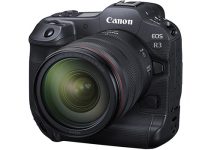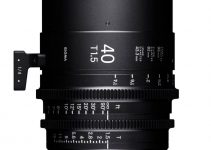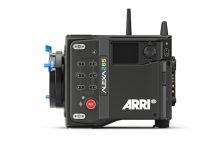Sony has a fully fleshed out lineup of cinema cameras at this time which they sensibly call the Cinema Line. This includes all the FX-series options plus the VENICE 2, though for most of us the FX3, FX6, and FX9 are more likely to find a way into our personal kits.
If you are looking for a new camera then you might be curious about finding out which model you need or which has features that might be worth the extra cost. For that you’ll want to check out this guide from CVP that breaks down all the key differences. Plus, they threw in the a7S III for good measure.
The best way to break things down is to start at the bottom and work your way up. Each time you move upwards there are some new features and design choices (and cost).
At the very start is the question that has been bugging us since the FX3 was released: should you go for the a7S III or FX3?
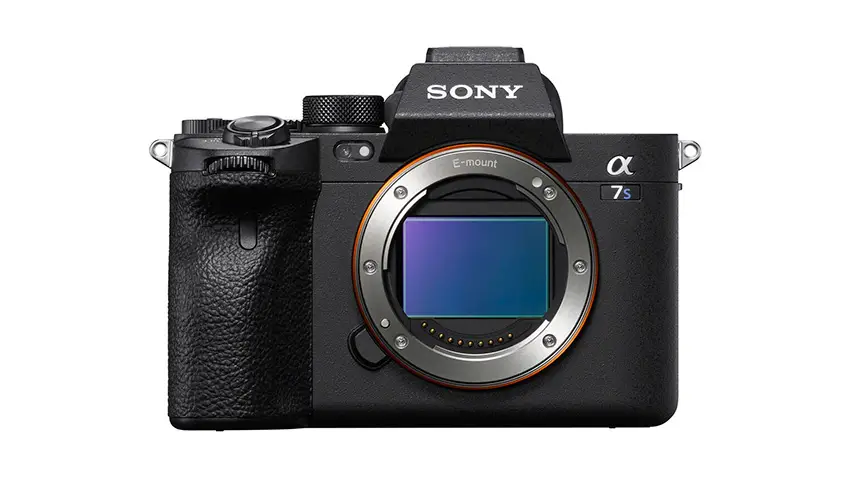
Image Credit: Sony
a7S III vs FX3
Timing of the a7S III and FX3 releases made a mess of things. The a7S III just became the top Sony video camera in such a compact form factor and then Sony decided to drop the FX3 with an actual “Cinema Line” label.
The two cameras are practically the same internally. Here is what they share:
- 12MP full-frame sensor
- BIONZ X processor
- UHD 4K up to 120p
- 10-bit 4:2:2 internal
- External raw output
- Dual CFexpress Type A/SD card slots
- And on and on…
While the FX3 is a great camera, it was a bit confusing that it was a dedicated Cinema Line body without some fairly essential “cinema” features.
That was true until a couple weeks ago at least when Sony released firmware version 2.0 for the FX3.
This took some initial steps in separating the FX3 from the a7S III and makes it just a tad more suitable for traditional cinema use.
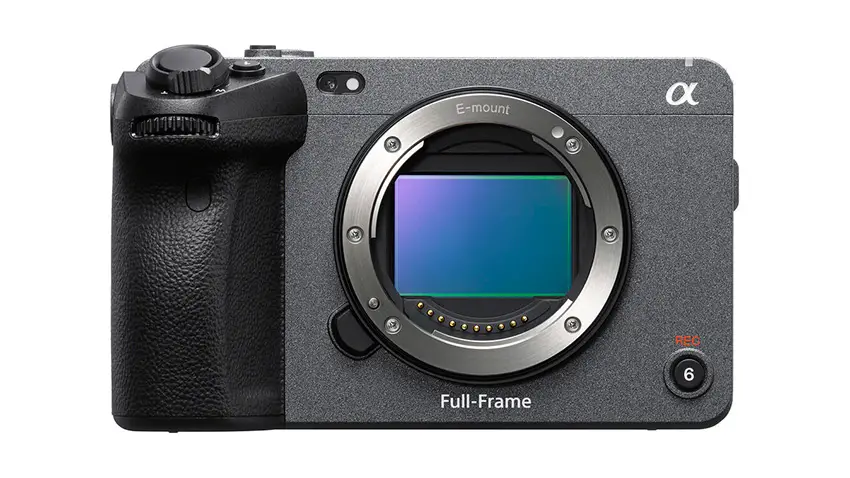
Image Credit: Sony
Here is what was added only to the FX3:
- Log Shooting Modes: Cine EI, Cine EI Quick, & Flexible ISO
- Ability to store and use 16 user LUTs
- Support for new VMC-BNCM1 Timecode Adapter Cable for true timecode sync
- New Main Menu Layout
- Tweaking monitoring screen to move information off image area
Unfortunately, there are still some features that many people would like to see in the FX3 that aren’t here yet. Including false color, open gate recording, shutter angle, noise reduction control, true 24.00 fps, and more.
One area where you might still want to think about the a7S III is if you really love an EVF. The one on the a7S III is spectacular. The FX3 only has the rear monitor.
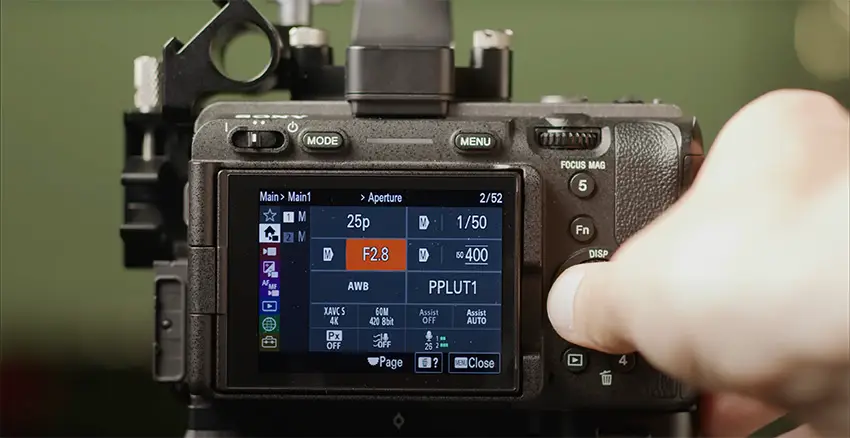
Image Credit: CVP
As for design, the FX3 has some clear advantages as Sony went and added a bunch of 1/4”-20 mounting threads for rigging it up. Plus, the button layout is optimized for video-first use and there are tally lights.
Oh, and the FX3 has a fan. This should help manage any overheating for extended shooting times.
For audio, the FX3 has a removable XLR handle in the box, which would make it a slightly better deal than getting the a7S III with the optional XLR-K3M Adapter.
If you are a videographer or filmmaker first, you should probably get the FX3. The a7S III only wins on two points: having an EVF and providing a more traditional mirrorless design.
FX3 vs FX6
Moving on up! Sitting above the FX3 is the FX6. This is where we start getting into the more traditional cinema cameras. You are also getting into high price points since the FX3 sits around $4,000 and the FX6 hits $6,000.
We still have the same sensor in the FX6 as was used in the a7S III and FX3. That’s good. The difference is in the processing which gives the FX6 a very slight edge.
External recording in raw does bring the FX3 up to match the FX6. In-camera with the FX6 you do have much better control over noise reduction which can get you a sharper image.
Both the FX3 and FX6 work with the same media and have very similar recording options. The FX6 adds a few more choices with DCI 4K and true 24.00 fps being available.
Autofocus is similar in both models, though they do give the FX3 a slight advantage owing to its touch interface.
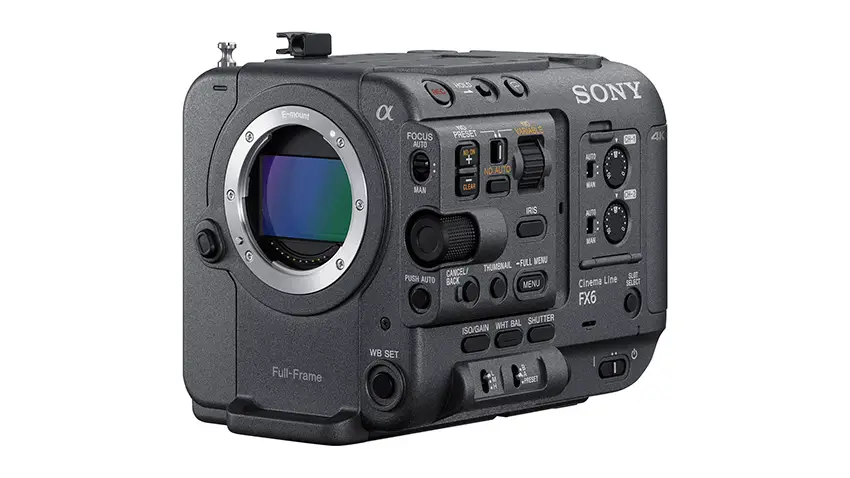
Image Credit: Sony
Speaking of interfaces, the menus are very, very different. The FX3 uses a newer menu structure that blends Alpha and Cinema setups while the FX6 sticks with a more standard cinema menu.
The FX6 does have some video-specific features that the FX3 does not:
- Waveforms
- Shutter angle
- Gain
- Focus Breathing Compensation
- Picture Cache Record
- Bokeh Control Mode
- And more…
The design of the FX6 is that of a compact cinema camera. It builds up well and has all the controls you may within reach. Also, not that it should matter but it does, the FX6 looks good on set and will make your clients feel more confident in your abilities.
Audio is a bit odd. The FX6 has a top handle with two XLR inputs that are a much better design than the FX3.
However, if you want to take that handle off for a stripped-down rig you lose all ability to input audio and have to rely on the internal mic for scratch. The FX3 at least has a 3.5mm input on the body.
The FX6 has a removable side handle for creating a much more ergonomic handheld setup. This adds a lot of versatility for building a rig.
Both the FX3 and FX6 have fans, but the FX6 is a bit more robust and is designed specifically for video shooting in any conditions.
For monitoring the FX6 has a bigger, repositionable LCD which comes with a hood for better use in bright conditions. There are also more professional outputs as the FX6 has an SDI out and a BNC in for timecode.
It took a while to get there but one of the biggest features in the FX6 that isn’t in the FX3 is the integrated electronic ND filter.
It has a range of 2-7 stops and can offer completely smooth adjustments. This is a huge benefit of traditional cinema cameras.
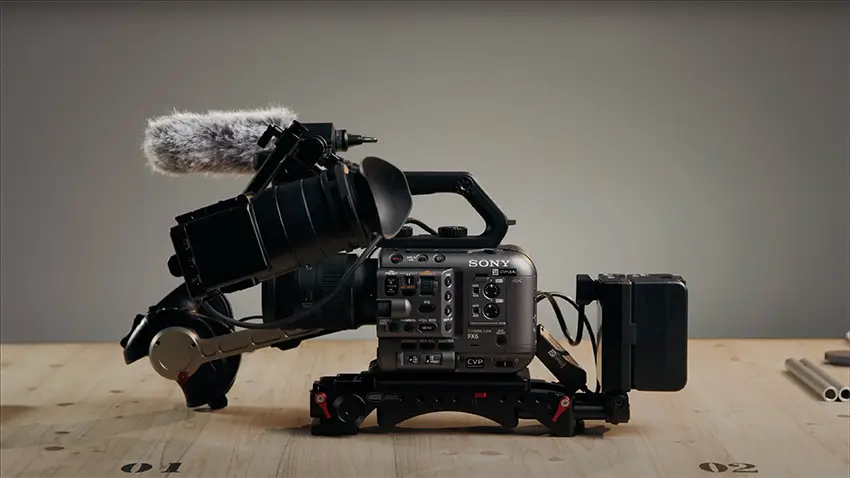
Image Credit: CVP
For power, the FX6 uses the much bigger BP-U series battery packs. Once you start looking at third-party options you can get much more than just some extra juice. Many offer additional outputs that’ll allow you to power all your accessories from a single point. It also comes with an AC adapter.
At the end of the day, the FX6 is a better camera when it comes to usability. While the FX3 definitely wins purely on the size front, the FX6 has advantages in nearly every aspect that matters for video with the only downside being a little extra bulk.
The FX6 is an ideal camera for a one-man operation and is a lot more adaptable and ready to use out of the box. Professional connectors and power separate it even more from the FX3. It will cost you though.
FX6 vs FX9
The FX6 and FX9 are very different cameras, but it is still worth comparing the two. Upfront I will say that people who need or want the FX9 will know that since the price for the FX9 is $5,000 more.
What we are looking at with the FX9 is a full-frame take on the FS7—one of the most-loved video cameras in the past decade. It has a lot of additional inputs and outputs and controls, the things that you need if you are going to have this camera used in a real production.
We are talking about multiple SDI outs, XLR inputs on the body, Genlock and timecode in/out, RCP support, and plenty more.
Out of the box, the FX9 is basically ready to be tossed on your shoulder. It is larger and not as good as the FX6 for compact, handheld shooting, but it much, much better for full setups.
All the Cinema Line cameras have the Sony E mount as a base, but the FX9 elevates it a touch. This one has a locking E mount which is much more secure.
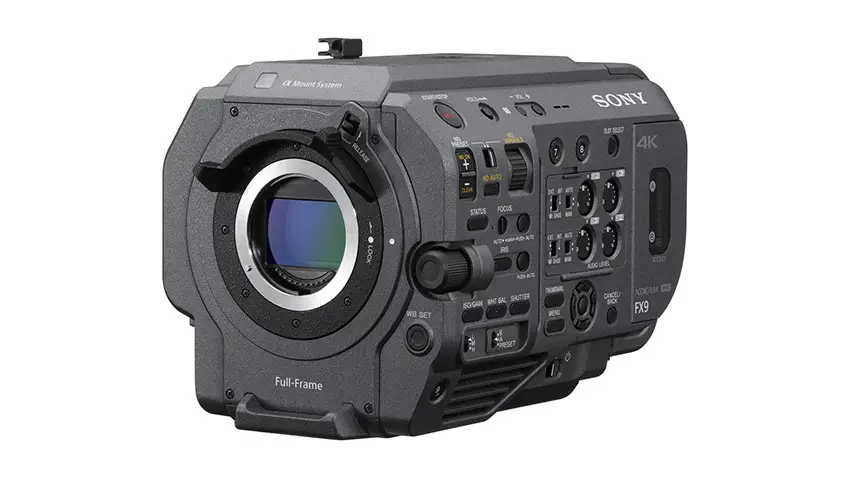
Image Credit: Sony
A big change is that the FX9 uses a different sensor from the other FX-series cameras. This one is a 6K full-frame sensor and while the FX9 doesn’t record in 6K it will do proper downsampling for sharper, cleaner imagery.
There are a couple of downsides of this higher resolution sensor which include slightly more rolling shutter than the FX6 or FX3, potentially slightly less dynamic range, and a touch more noise in low light.
The FX9 does have the same amazing ND filter system as the FX6.
Resolutions and recording options do shift a bit due to the new sensor. It’ll do 4K up to 30p without any crop and 60p with a 5K scan mode. Full HD can reach up to 180p, though oddly in Super 35mm this is limited to 120p.
As for raw output, the FX6 can do this natively while the FX9 needs an additional (and expensive) XDCA-FX9 Extension Unit. This unit does add some other features, such as support for drop-in mics which can be useful for broadcast.
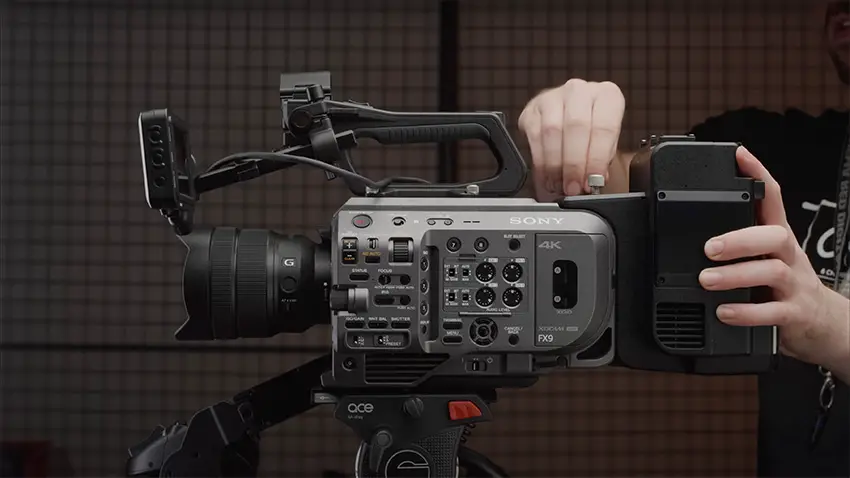
Image Credit: CVP
Going back to resolution, the higher resolution sensor allows for more useful crop modes. This means you can still get true 4K imaging even in Super 35mm shooting. It even enables a Full HD Super 16mm setting if that’s your thing.
The wider range of resolutions and crop modes allows for many more lenses and shooting environments to be covered.
For some reason, the FX9 is when you start getting in-camera anamorphic recording options.
Autofocus between the FX6 and FX9 is similar, though the FX6 might be a tad better.
For more practical concerns, the FX9 has a lot of legacy features, such as interlaced shooting, compatibility with XDCAM Air, and more.
Media is XQD on the FX9, which is older. It can also only dual record in Full HD while the FX6 can do it in either 4K or HD.
Batteries are the same between the FX6 and FX9, though the FX9 uses a lot more power. It’ll burn through batteries twice as fast.
There are a few more features that only the FX9 has:
- Skin Detail Correction
- Adaptive Matrix
- Aperture Correction
- Separate HD Detail Correction
- GPS Built-In
- MPEGHD Codec
- LUT use is independent from internal recording and output
The FX9 is designed to slot into professional productions, likely with larger camera departments and crew members who need to monitor what is going on or be hooked into other systems. For most independent shooters the FX6 will likely be a better fit.
Some of the unique features of the FX9 aren’t that important or useful for most people, but if you need them they can be the difference between getting a job and not.
Availability
Here’s the problem. Even if you know exactly what camera you want you might have trouble finding it. From what I have seen, the FX3 is just now starting to become regularly available.
However, the FX6 is backordered for months, potentially half a year or longer. The FX9 is a bit harder to gauge, but it is also showing backordered from major retailers.
Put in your order ASAP once you make a decision.
Which camera do you want in your bag?
[source: CVP]
Order Links:
- Sony a7S III Mirrorless Camera (B&H, Amazon)
- Sony FX3 Cinema Camera (B&H, Amazon)
- Sony FX6 Cinema Camera (B&H)
- Sony FX9 Cinema Camera (B&H)
- Sony VENICE 2 Digital Motion Picture Camera (B&H)
Disclaimer: As an Amazon Associate partner and participant in B&H and Adorama Affiliate programmes, we earn a small comission from each purchase made through the affiliate links listed above at no additional cost to you.


